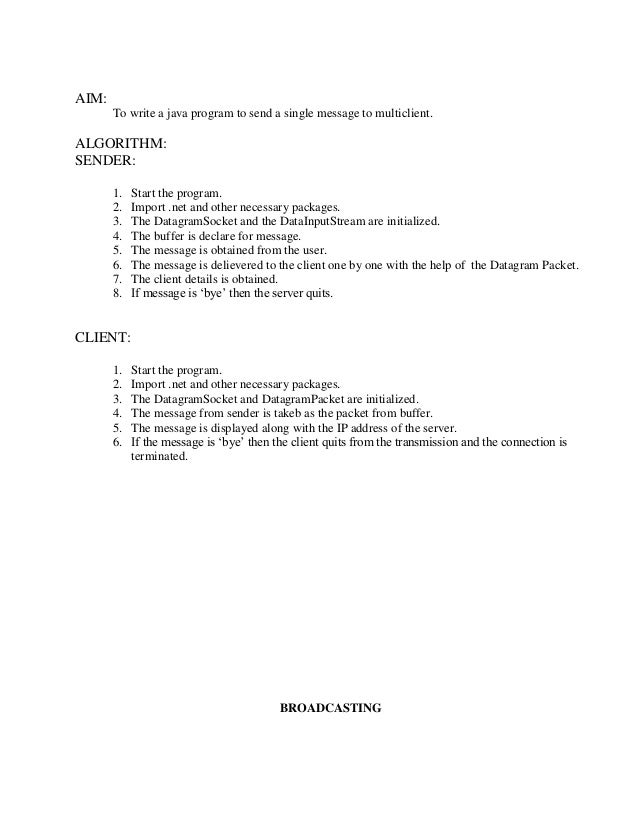Sliding Window Protocol Java Program
Implementation of a Sliding Window Protocol. Concurrent Systems: A Java Primer on Exceptions, Threads, Synchronization and I/O more or less simple (and. Appium C C# C++ Docker Go Informatica Java JavaScript Kafka Numpy Oracle Pandas PHP Python R React Native Scipy SFTP Teradata TGMC UNIX. Go back n sliding window protocol program in c. Search for jobs related to Simulation sliding window protocol java or hire on the world's largest freelancing marketplace with 14m+ jobs. It's free to sign up and bid on jobs.

This article includes a, but its sources remain unclear because it has insufficient. Please help to this article by more precise citations. (August 2010) () A sliding window protocol is a feature of packet-based. Sliding window protocols are used where reliable in-order delivery of packets is required, such as in the () as well as in the (TCP). Conceptually, each portion of the transmission (packets in most data link layers, but bytes in TCP) is assigned a unique consecutive sequence number, and the receiver uses the numbers to place received packets in the correct order, discarding duplicate packets and identifying missing ones.
The problem with this is that there is no limit on the size of the sequence number that can be required. By placing limits on the number of packets that can be transmitted or received at any given time, a sliding window protocol allows an unlimited number of packets to be communicated using fixed-size sequence numbers. The term 'window' on the transmitter side represents the logical boundary of the total number of packets yet to be acknowledged by the receiver. The receiver informs the transmitter in each acknowledgment packet the current maximum receiver buffer size (window boundary).
The TCP header uses a 16 bit field to report the receive window size to the sender. Therefore, the largest window that can be used is 2 16 = 64 kilobytes. Film Metal Fight Beyblade Sub Indo there. In slow-start mode, the transmitter starts with low packet count and increases the number of packets in each transmission after receiving acknowledgment packets from receiver. Cities Skylines Mods Traffic Manager Download. For every received, the window slides by one packet (logically) to transmit one new packet. When the window threshold is reached, the transmitter sends one packet for one ack packet received. If the window limit is 10 packets then in slow start mode the transmitter may start transmitting one packet followed by two packets (before transmitting two packets, one packet ack has to be received), followed by three packets and so on until 10 packets.
But after reaching 10 packets, further transmissions are restricted to one packet transmitted for one ack packet received. In a simulation this appears as if the window is moving by one packet distance for every ack packet received. On the receiver side also the window moves one packet for every packet received. The sliding window method ensures that traffic on the network is avoided. The application layer will still be offering data for transmission to TCP without worrying about the network traffic congestion issues as the TCP on sender and receiver side implement sliding windows of packet buffer. The window size may vary dynamically depending on network traffic.
For the highest possible, it is important that the transmitter is not forced to stop sending by the sliding window protocol earlier than one (RTT). The limit on the amount of data that it can send before stopping to wait for an should be larger than the of the communications link. If it is not, the protocol will limit the effective of the link. Contents • • • • • • • • • • • • • • • • Motivation [ ] In any communication protocol based on for, the receiver must acknowledge received packets.